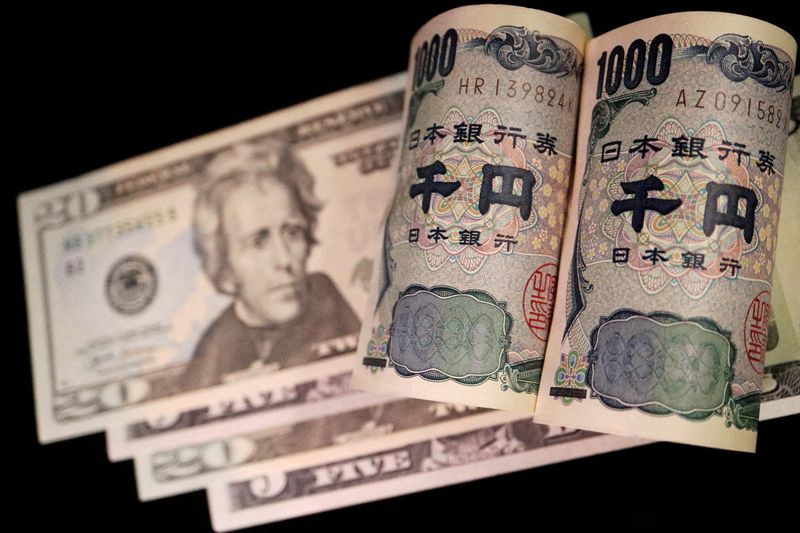By Brigid Riley and Anna Pruchnicka
LONDON/TOKYO (Reuters) -The dollar touched five-month highs against the pound and euro on Tuesday, a day after hotter-than-expected U.S. retail sales sent Treasury yields higher, raising worries of an intervention from Tokyo as the yen languished at its lowest since 1990.
Data on Monday showed U.S. retail sales rose 0.7% last month, compared with a 0.3% rise that economists polled by Reuters had forecast, reinforcing expectations that the Federal Reserve will not be in a rush to cut interest rates this year.
"The U.S. economy continues to grow very solidly at a level which is above the long-term trend and which does support higher U.S. bond yields and which argues against the Fed cutting interest rates," said Kenneth Broux, head of corporate research, FX and Rates at Societe Generale (EPA:SOGN).
Markets are now pricing in a 41% chance of the Fed cutting rates in July, compared with around 50% before the data, according to CME FedWatch tool.
Investors will be watching for clues from Federal Reserve Chair Jerome Powell, who is due to speak later on Tuesday, his first comments since U.S. inflation data last week came in hotter than expected.
The euro was up a touch to $1.0626, but still hovering near Nov. 2 lows, under pressure after the European Central Bank last week signaled a rate cut in June.
Sterling was also marginally up to $1.2449, having earlier hit a five-month low of $1.2409, as traders digested data that showed British core wage growth posted its weakest rise since the three months to September 2022 but remained strong by historical standards.
That helped the U.S. dollar index rise 0.04% to 106.23, having hit its highest since Nov. 2, in morning European trading.
EYES ON ASIA
The yen last hovered around 154.64 per dollar, its weakest level in 34 years, and close to what analysts say is the new resistance level of 155.
That kept traders on high alert for yen-buying intervention from Japanese authorities. With hedge funds building up their largest bets against the currency in 17 years, a rebound in the yen could trigger a significant rally.
In Tokyo, Japanese Finance Minister Shunichi Suzuki said on Tuesday he was closely watching currency moves and will take a "thorough response as needed".
Though intervention, even if it comes, will not be a long term solution, say some.
"Intervention can only work today to slow or manage the pace of depreciation, but cannot turn a trend. And it's actually very costly," Broux said.
"The big challenge for a number of these Asian currencies, is that as long as U.S. bond yields keep grinding higher, you're not going to get a lot of success because you're fighting a wider yield spread."
The U.S. benchmark 10 year yield was last 4.653%, just off the previous day's five-month high. Japan's 10 year yield was last 0.873%. [JP/]
Other currencies in emerging Asia were also at multi-year or multi-month lows. [EMRG/FRX]
The Chinese yuan edged marginally lower even after GDP data for China's first quarter beat expectations in a boost for policymakers trying to shore up confidence in the face of a protracted property crisis.

The onshore yuan fell to 7.2422 per dollar its weakest since November, before picking up after the data, and was last 7.2388 per dollar. In the offshore market, the dollar was up 0.1% at 7.2680 yuan.
The Australian dollar dropped 0.45% to $0.6414, having touched its lowest since Nov. 14.